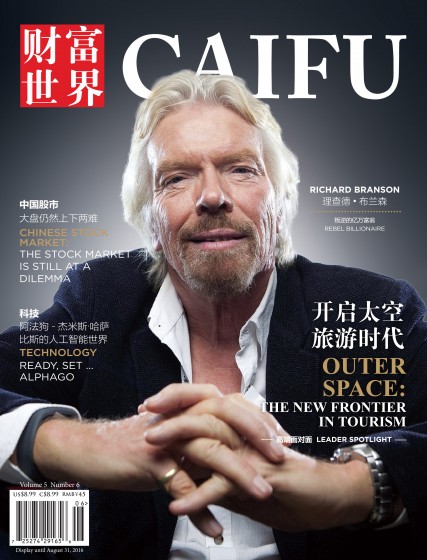An American Perspective: What Concerns the United States about China
- Caifu Magazine | by CAIFU Magazine
- EN
The first concern is about market fairness. As early as 2016, the Chinese government announced plans to invest $150 billion USD to make China's integrated circuit chip products reach 70 percent in China’s domestic market share by 2025. This resulted in severe criticism from then U.S. Commerce Secretary Penny Pritzker.

“This unprecedented, state-driven intervention will distort the market and undermine the innovation environment within the industry, which will create a similar situation which already plagues the steel, aluminum, and green industries; a worldwide overcapacity, causing market prices depressed by human factors,” she said. “All the related industries, not only in the United States, but also on a global scale, will suffer significant damage and will be forced to cut jobs."
The second concern is about intellectual property. The European-American Chamber of Commerce has repeatedly mentioned that in China it is the government rather than the market that leads industry development. This is a big step backward, after the promise to let the market decide, made during the Third Central Committee Session of the 18th Party Conference in 2013. The recent wave of large-scale acquisitions by Chinese enterprises in Western countries is also the result of state-driven powers, with aims to utilize state power to acquire key commercial technologies and to force large-scale technology transfers. China's central, provincial and municipal governments are working with state-owned banks to facilitate the construction of factories, especially those that manufacture memory chips. According to the United States, these new factories often rely on technologies that international companies are forced to transfer, an exchange condition for their participation in the Chinese market, while global trade rules prohibit such mandatory technology transfer. The United States believes that the Chinese acquisition of foreign companies and technology is out of the government’s interest, not actual business objectives.
In the implementation of Made in China 2025, China will restrict investment fields and scale of foreign-funded enterprises in China through imposing qualifications and certifications. It is foreseeable that the development space of foreign-funded enterprises in China will be compressed. The U.S. Chamber of Commerce pointed out that the default limit will be the first barrier for foreign investment to enter the industry listed in Made in China 2025, thus a barrier into the broader Chinese economy. The European-American Chamber of Commerce also noted that in the long run, China's market space will be tightened for, and will have a direct impact on European companies. The Mercator Institute for China Studies indicated that China's high-tech investment aims to undermine the technological leadership of industrial countries. In some areas, international companies will have difficulty getting opportunities in China. In addition, Chinese state-owned banks will provide low-interest loans to Chinese companies in the target industry, which will cause global overcapacity and a price drop, subverting the intellectual property rules of high-input and high-return and the entire innovation incentive system of the market economy since the Industrial Revolution, which will ultimately drag down the orderly development of global innovation.
In a purely economic sense, the United States does not worry about the rise of Chinese private companies such as Huawei and ZTE. What it is worried about is the system behind it. Huawei is facing the same problem not only in the United States, but also in Europe, Australia and India. Chinese companies now have the scale of world-class companies, but their disclosure system is considered primitive. One of the most basic principles of the market economy and the rule of law is disclosure. American society does not know the boundaries and relationships between these companies and the government, and has deep concerns about the opaque background of Chinese companies, which is a key problem. The incident regarding ZTE, whose deception and concealment to the U.S. government has contributed the distrust of Chinese companies in American society.
In fact, this concern started long ago. Since the Obama era, the United States has prevented Chinese technology companies from acquiring U.S. companies. Tsinghua Unigroup tried to acquire Idaho's storage chip maker Micron Technology for $23 billion USD in 2015, but U.S. regulatory concerns stopped the deal. The Trump administration vetoed to block Chinese investors' acquisition of Lattice Semiconductor in 2017. Huawei has long been rejected by the United States. On a 200-page report, the White House presented a black list, including the Midea Group, China National Chemical Corp., China Railway Construction Corp. Ltd. (CRRC), the Commercial Aircraft Corp. of China, the Aviation Industry Corp. of China, Tsinghua Unigroup, and Huada Gene.
The innovation model and institutional foundation between China and the United States are far apart. It is from the bottom-up in the United States, while national innovation is based on private investment in research and universities. In China it is a top-down model, with the state leading the industry. For the past 40 years, the Chinese government has been using fiscal funds to stimulate innovation. China has demonstrated a strong policy will, and with Made in China 2025, it highlights the government's dominant position even more. Inevitably, in market competition, this kind of institutional difference has led to great conflict between China and the United States.















